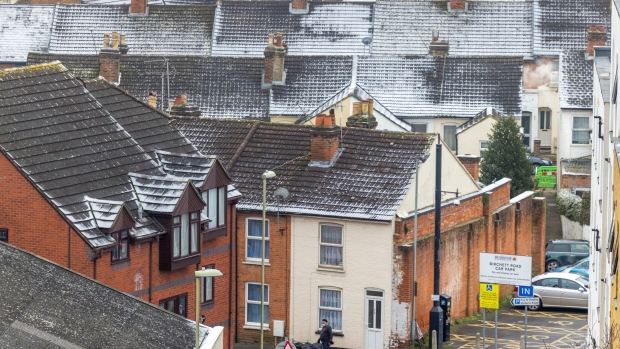Dec 16, 2022
A UK Pilot Program Is Paying People’s Heating Bills for Them
, Bloomberg News

(Bloomberg) -- Underheating can be fatal: It’s the cause of roughly 10,000 deaths in the UK every winter, giving the country the sixth highest rate of excess winter deaths in Europe. People living in overly cold homes also cost Britain’s taxpayer-funded National Health Service an estimated £860 million ($1 billion) each year.
Now, an NHS pilot program aims to tackle both problems at once.
Between November 2022 and March 2023, the trial program is covering the heating costs of 1,000 vulnerable patients selected by the NHS based on pre-existing conditions, like asthma, that are impacted by cold weather, as well as their hospital-admission track record. The program was designed by nonprofit Energy Systems Catapult in conjunction with the NHS, and is financed by the social impact fund of oil giant BP. Its goal is to determine whether such an approach is more affordable than the status quo, and more effective at saving lives.
The risks of underheating are significant this year. Thanks to a Europe-wide energy crisis, utility bills in Britain are up more than 100% over last winter, and anxiety about the cost of keeping warm is widespread. Publicity campaigns are also encouraging Brits to use their energy as efficiently as possible, prompting many to turn down the thermostat.
The trial, being run in the Tees Valley in the north of England and Aberdeenshire in Scotland, builds on UK efforts to tackle problems like mental health and loneliness through community assistance rather than drugs or hospitalization. A similar concurrent trial involving 150 people in Gloucestershire, funded by the government, builds on a program that ran from December 2021 to March 2022, in which heating for each of 28 participants cost an average of £647 ($788).
“The benefits are quite wide: We know that children’s educational achievement and attainment can be improved if they go from living in a cold home to living in a warm home,” says Dr. Rose Chard, fuel poverty and consumer vulnerability lead at Energy Systems Catapult, who designed the program. “We know that people are more likely to be able to stay in work if they are well, if they are warm at home. There is real opportunity for this sort of innovation because the effects of living in a cold home are so widely spread across the population.”
There could also be longer-term benefits. During last year’s Gloucestershire trial, participants were more likely than others to engage with efforts to improve the energy efficiency of their homes. Evidence from a separate UK initiative, the Warm Front, which funded heating and insulation retrofits between 2000 and 2013, suggests that even when people spent more on heating after home improvements, they were still happier.
A separate study published last month in Australia examined the possibility of helping with energy costs and retrofits alongside care for the elderly. Its author, Dr. Nicola Willand of RMIT University, says she found that in some cases health workers were buying fuel for their patients. “The health service staff would notice and sometimes they would even try and help people — so if someone was running out of wood they would just buy a whole heap of wood and give it to them,” she says.
Willand came up with a referral system that allowed overburdened social workers to contact energy consultants to help their clients. Energy companies also responded positively to the idea, she says, as a way to discourage underheating.
Both the UK trials and the Australia study highlight methods for changing how people pay for their heating. The current system in most of Britain, where customers pay per kilowatt hour of heating gas or electricity, isn’t the only option. “Heat as a service,” for example, lets utilities sell customers an agreed level of warmth rather than units of fuel. The heating mechanism, such as a heat pump or boiler, is leased from the energy company rather than owned by the customer.
There’s evidence that “heat as a service” also increases people’s interest in low-carbon technologies, and incentivizes utilities to improve the efficiency of customers’ homes. The UK government’s current energy price guarantee, a publicly funded subsidy that caps household energy bills, could have a similar effect — the government now has a financial interest in lowering people’s usage.
©2022 Bloomberg L.P.






